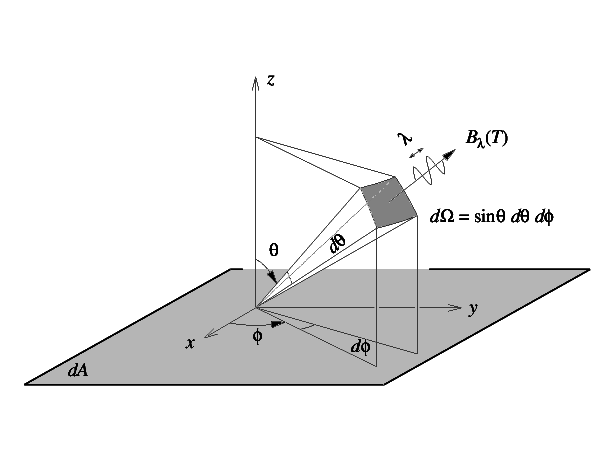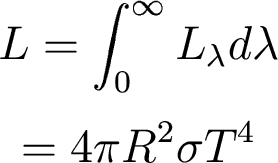

which describes this:

And remember the units of the Planck function: erg/s/cm2/Angstrom/steradian
If we integrate the Planck function over the whole surface area of the star, and over all "solid angle" of space, we will get the monochromatic luminosity:

which has units of erg/s/Angstrom. If we now integrate over all wavelengths we get the total luminosity of the star:

with units of erg/s. (some of this math is in section 3.5 of the text...).
The concept of monochromatic luminosity versus total luminosity
brings up the concept of color...